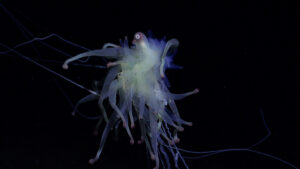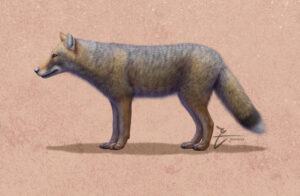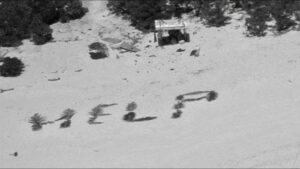A passion for the natural world drives many of our adventures. And when we’re not actually outside, we love delving into the discoveries about the places where we live and travel. Here are some of the best natural history links we’ve found this week.
Lightning and record heat trigger wildfires in British Columbia: Over 130 wildfires are burning across Western Canada, triggered by lightning strikes and record high temperatures. At least one of those days featured 12,000 lightning strikes. On Tuesday, the temperature in Lytton, B.C. hit 49.6°C, the highest temperature ever recorded in Canada. By Wednesday evening, the village was in flames and residents had to flee. Ninety percent of it burned to the ground.

Oceanographer Arthur Raff examines a sensor on a magnetometer in 1960. Photo:
SPECIAL COLLECTIONS & ARCHIVES, UC SAN DIEGO
It’s not the flux capacitor, though
A WWII submarine-hunting device supports theory of plate tectonics: In the 1930s, the fluxgate magnetometer mapped small anomalies in the Earth’s magnetic field. By 1942, the Navy commonly used it to hunt out enemy submarines that could cause such anomalies. After the war, oceanographers used fluxgate magnetometers to measure and map magnetic anomalies in seafloor rocks. It indicated that the Earth’s magnetic field reverses direction from time to time and that the banding on them is symmetrical on either side of ocean ridges. The “magic profile” produced is a leading piece of evidence for the theory of plate tectonics.
The Colorado River is shrinking: The Colorado River system is a critical water source for the U.S. and Mexico. As the climate warms, the flow of the river has diminished. Now Jack Schmidt, a leading river scientist, is pushing back. For decades he has been the go-to expert for policymakers and stakeholders regarding the river. He and his colleagues are pushing science to the forefront of public debate about Colorado. Their main conclusion is that a drier future will not have enough water to satisfy all the demands from cities, farmers, power producers, and others, while still protecting sensitive ecosystems and endangered species.
Currents help sharks save energy: New footage of grey reef sharks shows them swimming against the current but barely moving their tails. This behavior had not been seen before. Researchers discovered that the sharks used the upward movement from the current to effectively surf in the water. This cut their energy consumption by 15%. “The sharks use a conveyor belt-like system to surf,” noted lead researcher Yannis Papastamatiou of Florida International University. “The one at the front lets the current carry it to the back of the line and another shark takes its place.”

A transplanted black-footed albatross chick on Guadalupe Island. Photo: GECI/J.A. SORIANO
Moving time for albatrosses
Seabirds given a new island home: Ninety-five percent of the world’s black-footed albatrosses live near the Hawaiian Islands. Midway Atoll, for example, is home to one-third of the breeding population. Research indicates that sea-level rise and storm waves will flood over 91% of the albatross nests on the island in the coming decades. To forestall this, a joint U.S.-Mexico project moved black-footed albatross eggs and chicks from Midway to Guadalupe Island. The hope is that once imprinted, the birds will return here to breed.
Clean air act has saved 1.5 billion birds: U.S. pollution laws designed to protect human health are also saving birds. Estimates suggest that in the past 40 years, these regulations have saved 1.5 billion birds. Ozone pollution, for example, damages the respiratory system of small migratory birds and affects their food sources.
Earth’s cryosphere shrinking by 87,000 square kilometres a year: The global cryosphere consists of all areas of frozen water on earth, including sea ice, snow, and frozen ground. Between 1979 and 2016, the earth’s cryosphere shrank 87,000 square kilometres every year because of climate change. The surface area of the cryosphere is crucial as bright snow and ice reflect back sunlight and keep the earth cooler. A smaller cryosphere affects air temperatures, sea level, and ocean currents. “The cryosphere is one of the most sensitive climate indicators and the first to demonstrate a changing world,” said Xiaoqing Peng, a physical geographer at Lanzhou University. “Its change in size represents a major global change, rather than a regional or local issue.”






